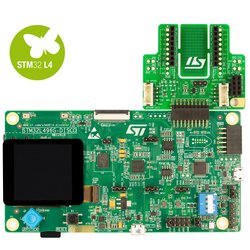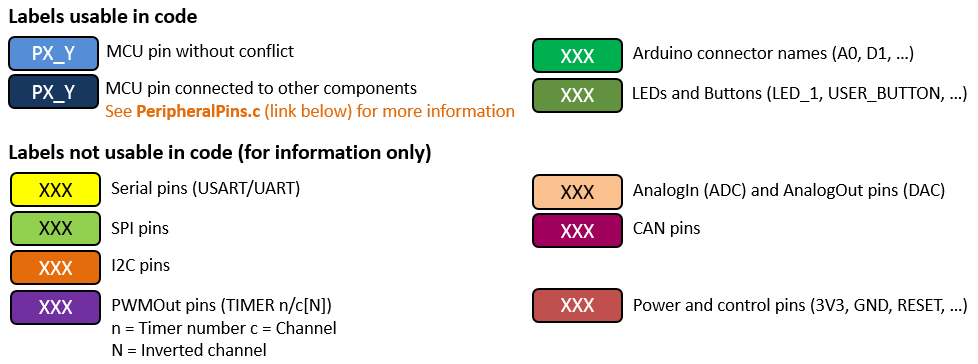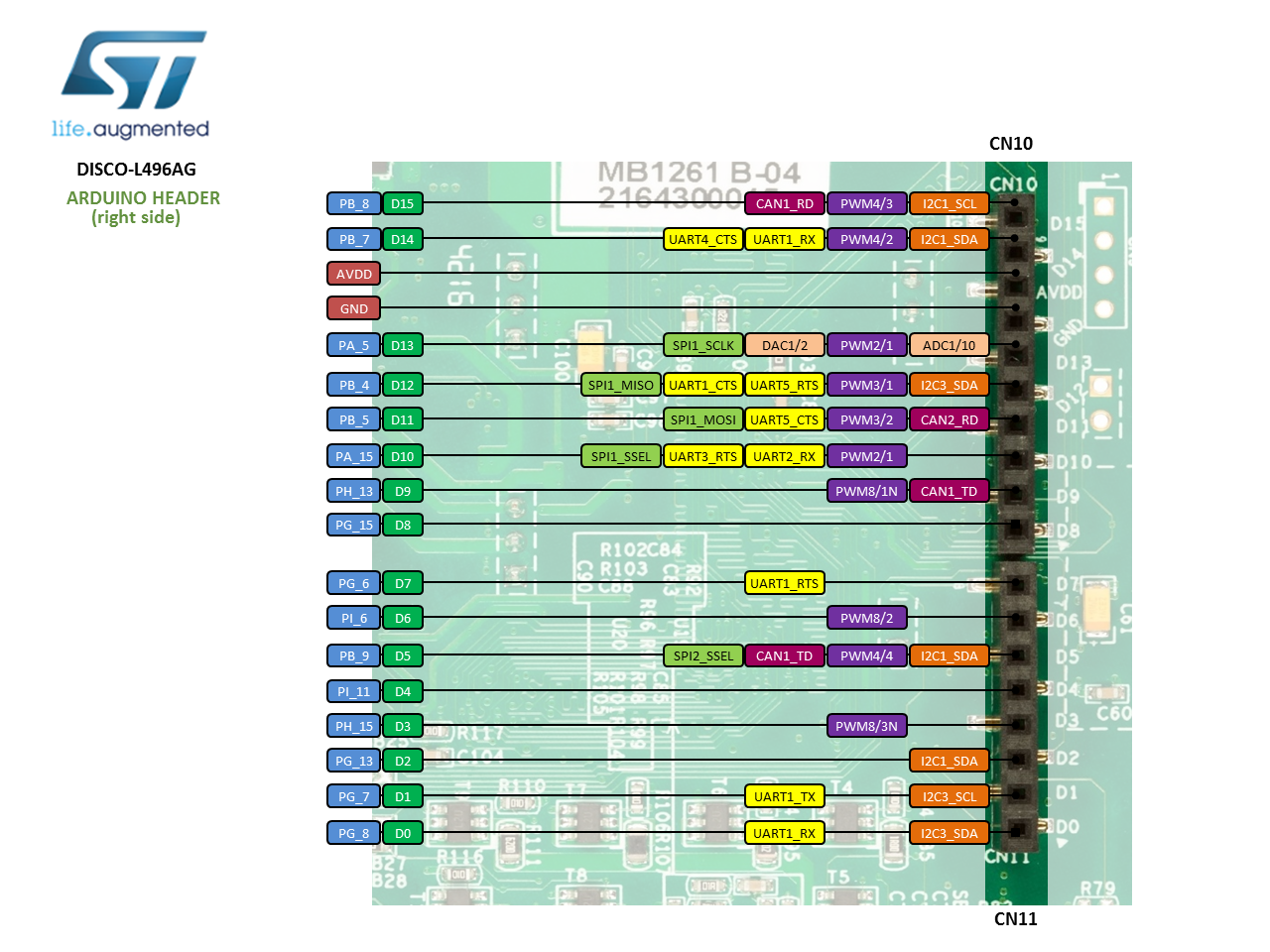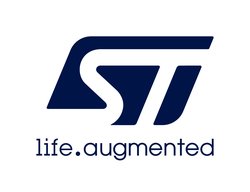DISCO-L496AG
STM32L496 Discovery kit, cellular ready, LCD, USB, Audio, QSPI, Camera interface

Overview¶
The 32L496GDISCOVERY Discovery board is a complete demonstration and development platform for STMicroelectronics ARM® Cortex®-M4 core-based STM32L496AG microcontroller. Thanks to the innovative ultra-low-power oriented features, extended RAM and graphics performance (Chrom-ART Accelerator™) offered by the STM32L496AG, the 32L496GDISCOVERY board is designed to enable easy prototyping for many applications, including audio and graphics, with state-of-the-art energy efficiency. For even more user-friendliness, the on-board ST-LINK/V2-1 debugger provides out-of-the-box loading and debugging capabilities.
Microcontroller main features¶
- STM32L496AGI6 microcontroller in an UFBGA169 package
- ARM® 32-bit Cortex®-M4 CPU with FPU
- 1 Mbyte of Flash memory and 320 Kbytes of RAM
- Frequency up to 80 MHz
- RTC
- Dedicated Chrom-ART Accelerator™ for enhanced graphic content creation (DMA2D)
- 8- to 14-bit camera interface up to 32 MHz (black&white) or 10 MHz (color)
- LCD 8 × 40 or 4 × 44 with step-up converter
- Up to 24 capacitive sensing channels: support touchkey, linear and rotary touch sensors
- 4x digital filters for sigma delta modulator
- USB OTG 2.0 full-speed, LPM and BCD
- 2 x SAIs (serial audio interface)
- 4 x I2C FM+(1 Mbit/s), SMBus/PMBus
- 5 x U(S)ARTs (ISO 7816, LIN, IrDA, modem)
- 1 x LPUART
- 3 x SPIs (4 x SPIs with the Quad SPI)
- 2x CAN (2.0B Active) and SDMMC
- SWPMI single wire protocol master I/F
- IRTIM (Infrared interface)
- 14-channel DMA controller
- True random number generator (TRNG)
- CRC calculation unit, 96-bit unique ID
Board features¶
- 1.54 inch 240 x 240 pixel-TFT color LCD with parallel interface
- SAI Audio CODEC, with a stereo headset jack, including analog microphone input Stereo digital MEMS microphones
- microSD™ card connector (card included)
- Camera 8 bit-connector
- STMod+ and PMOD connectors
- 8 Mbit-PSRAM
- IDD measurement
- 64 Mbit-Quad-SPI Flash
- 1 user LED
- Reset push button
- 4 direction-joystick with selection
- USB OTG FS with Micro-AB connector
- Compatible Arduino™ Uno V3 connectors
- On-board ST-LINK/V2-1 debugger
- USB ST-LINK functions: Virtual COM port, mass storage, debug port
- 5 source options for power supply
- ST-LINK/V2-1 USB connector
- User USB FS connector
- VIN from Arduino™ connector
- 5 V from Arduino™ connector
- USB charger
- 2 possible supply voltages for the MCU: 1.8 V and 3.3 V
Board pinout¶
Pins Legend¶

You can find more details on the available pins and labels in the PeripheralPins.c and PinNames.h files.
These files can be found in:
- ARMmbed/mbed-os repository on GitHub (up-to-date version, used with mbed CLI commands)
- mbed-dev library in developer.mbed.org (source files of the mbed library used on mbed compiler IDE)
Arduino-compatible headers¶


STMod+ header¶

mbed-os examples¶
These official mbed-os examples have been tested on this board:
You can find more mbed-os examples here HERE
Technical references¶
How to buy ?¶
Known limitations¶
The following section describes known limitations of the platform. Note that general issues are tracked into the mbed repository available on GitHub.
- The volume name when the board is connected is displayed
DIS_L496ZGwhile it should beDIS_L496AG(to be aligned with theSTM32L496AGMCU on the board). This is only cosmetic and it has no effect with STLink communication (drag&drop, debug and VCP).
If you want to change the volume name, you can run the command:
ST-LinkUpgrade.exe -force_prog -msvcp -volume DIS_L496AG (you have to install first the STLink Utility software).
You need to log in to post a discussion

